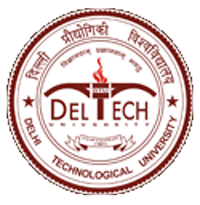Please use this identifier to cite or link to this item:
http://dspace.dtu.ac.in:8080/jspui/handle/repository/21525| Title: | ELECTROCHEMICAL IMMUNOSENSOR FOR CANCER BIOMARKER DETECTION |
| Authors: | SWEETY |
| Keywords: | ELECTROCHEMICAL IMMUNOSENSOR CANCER BIOMARKER DETECTION MXene |
| Issue Date: | Mar-2025 |
| Series/Report no.: | TD-7835; |
| Abstract: | The research work presented in this thesis discusses the fabrication of an immunosensor that uses a biological recognition element in direct contact with a transducer to deliver quantitative information. The biological sensing element and the bio-receptor are the two primary components that make up a biosensor. A specific analyte can be detected by using an enzyme, antibody, DNA, or other bio-element. In contrast, the transducer part converts the biological signal into a measurable electrical signal. A new generation of biosensors has recently been developed to assist the combination of biomolecules with biocompatible conducting frameworks. Many interdisciplinary areas of science and technology can be employed to innovate biosensors used in clinical diagnostic and therapeutic applications. Cancer, which has long been considered the world's top cause of death, is more likely to occur as a result of the enormous population growth and changing lifestyles. Every day, there are an increasing number of new cases of cancer. In a healthy adult, the mechanism of cell formation is a constant and consistent process that maintains the proper number of cells in different tissues. The formation of cancer, which typically manifests as a swollen mass called a malignant tumor, is caused by inappropriate cell division and uncontrollable cell growth. Moles and warts are examples of benign tumors that are usually not dangerous or damaging. Additionally, when a tumor is malignant, the cells spread to surrounding organs by invading neighboring tissue through blood vessels. In this area, they split and grow once more, eventually forming a new tumor in the afflicted organ. The process by which cancer spreads to several body organs is known as metastasis. The highest rates of cancer-related deaths in developing countries are probably caused by delayed diagnosis and limited access to early, standard treatment. It has been noted that traditional detection methods can take several hours or, in certain cases, a few weeks to yield results. These conventional methods, however, are less sensitive, time-consuming, costly, and require specialist equipment. Therefore, the development of trustworthy, sensitive, specific, quick, and user-friendly tools for identifying cancer biomarkers is urgently needed. As a result, efforts have been made to increase the sensitivity and specificity of portable biosensors. In the last decade, 2D-Mxenes have delivered an excellent performance due to their outstanding metal-like conductivity, layered morphology, superior hydrophilicity and strong ability for incorporation of functional groups. viii Furthermore, MXene possesses excellent ion-intercalation behavior, high specific surface area and superior electron transfer ability. Ti3C2Tx has been considered as one of the most studied MXene in different fields such as supercapacitors, energy conversions and biosensing fields. The inclusion of nanomaterials like metal particles, metal oxides and metal sulfides has sparked potential to customize the unique characteristics of each component into a single material. The biosensor’s performance has been improved by further synergistic effects of these materials, leading to increased sensitivity and selectivity. The present study focuses on the synthesis and characterization of Ti3C2Tx and its hybrid materials, for the development of highly sensitive electrochemical immunosensors having application in the detection of EpCAM antigen (a cancer biomarker). The transducer surface has been prepared by two methods viz. electrophoretic deposition and simple dip coating method. The anti-EpCAM has been coupled to the transducer material covalently by using EDC:NHS. Further, electrochemical detection has been performed by DPV and chronoamperometry techniques. Moreover, the clinical validation of the fabricated platforms has been confirmed by analyzing artificial spiked serum samples, thereby proving its efficiency. |
| URI: | http://dspace.dtu.ac.in:8080/jspui/handle/repository/21525 |
| Appears in Collections: | Ph.D. Applied Chemistry |
Files in This Item:
| File | Description | Size | Format | |
|---|---|---|---|---|
| Sweety Ph.D..pdf | 7.9 MB | Adobe PDF | View/Open |
Items in DSpace are protected by copyright, with all rights reserved, unless otherwise indicated.



